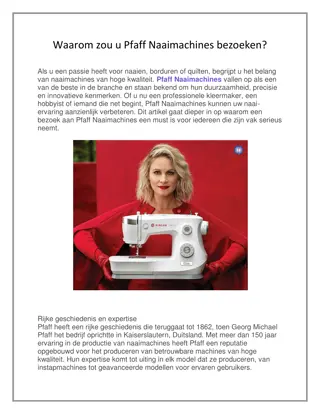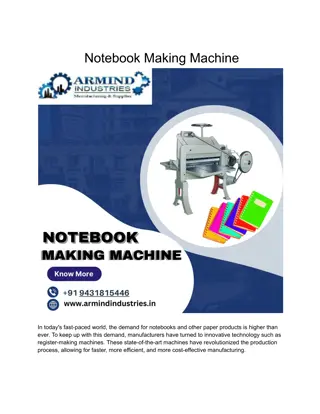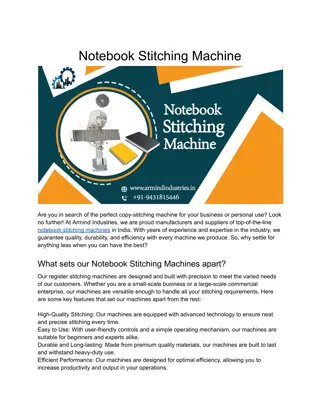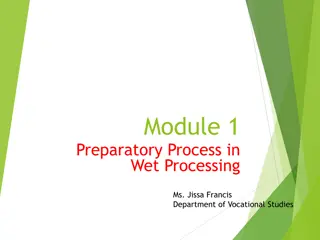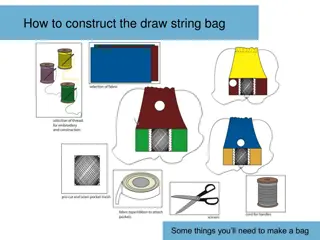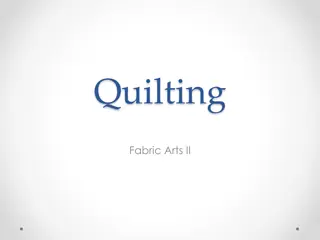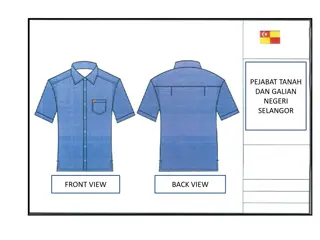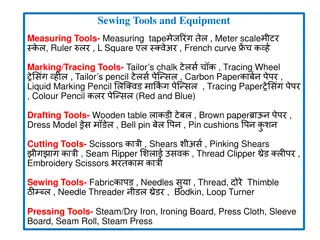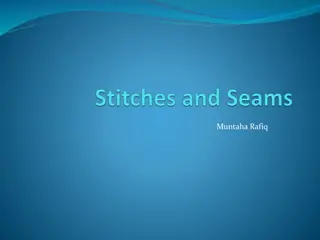Understanding Stay Stitching and Easing in Sewing
Stay stitching is crucial for stabilizing fabric edges, especially bias-cut and curved pieces, while easing helps create fullness without compromising garment structure. These techniques are essential in garment construction to ensure proper fit and prevent distortion. Learn where and how to use stay stitching and easing for professional sewing results.
Download Presentation

Please find below an Image/Link to download the presentation.
The content on the website is provided AS IS for your information and personal use only. It may not be sold, licensed, or shared on other websites without obtaining consent from the author. Download presentation by click this link. If you encounter any issues during the download, it is possible that the publisher has removed the file from their server.
E N D
Presentation Transcript
STAY AND EASE STITCHING STAY AND EASE STITCHING S.SUGANTHI M.Sc., M.Phil. ASSISTANT PROFESSOR DEPARTMENT OF FASHION TECHNOLOGY BON SCOURS COLLEGE FOR WOMEN THANJAVUR
STAY STITCHING Stay stitching is a single line of stitching through one layer of fabric. It is sewn to stabilize the fabric and prevent it from becoming stretched or distorted. Though you may be tempted to skip this step, it's very important and will ensure that your handmade clothing drapes properly.
WHERE IT IS USED This type of stitch is usually called for on the edge of a piece of fabric that has a bias cut, which can become distorted more easily than other fabric grain cuts. It's also commonly used on curved cuts, such as necklines, to ensure pieces fit together properly in the most crucial places.
BIAS-CUT FABRIC There are three types of fabric grain: lengthwise grain, crosswise grain, and bias grain This naturally occurring difference is why stay stitching is particularly important on the bias
Ease is a sewing term used in many pattern instructions. It means to draw the fibers of fabric closer together than they were woven or originally manufactured.
WHAT ARE SOME OF THE COMMON USES OF EASING IN SEWING On a set-in sleeves On princess seams Shoulder seam
THE PURPOSE OF EASING The idea is to provide fullness to a particular area of the garment with it looking as seamless as possible
EXAMPLE OF WHEN EASING IS USED Easing in the fabric allows a curved capped sleeve to fit into the straight line of the jacket body, which can look like an impossible task if you don't ease in the sleeve cap between the markings. One of the telltale signs of a "homemade garment" is to see puckers or gathers, especially in the sleeve cap of a garment.




